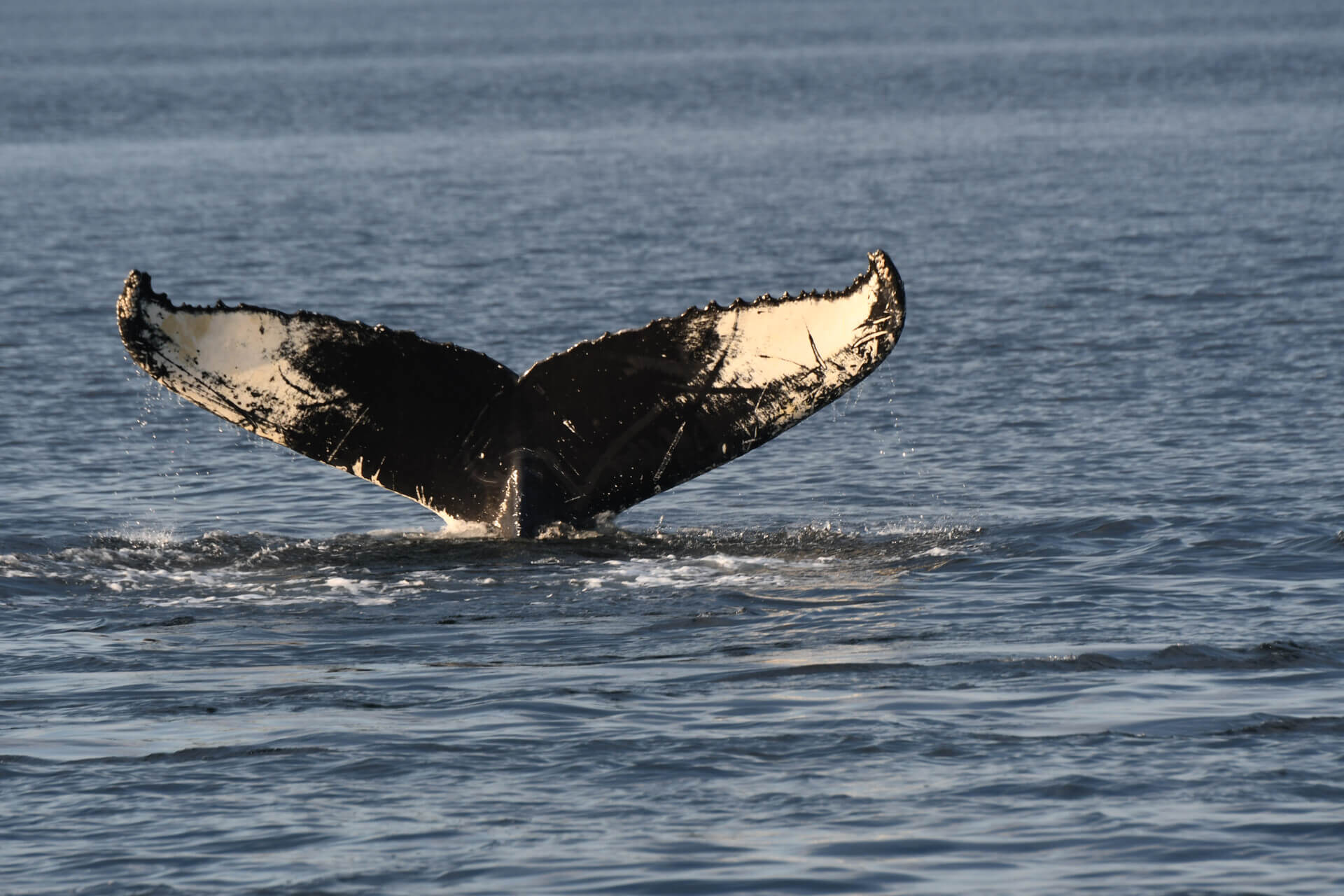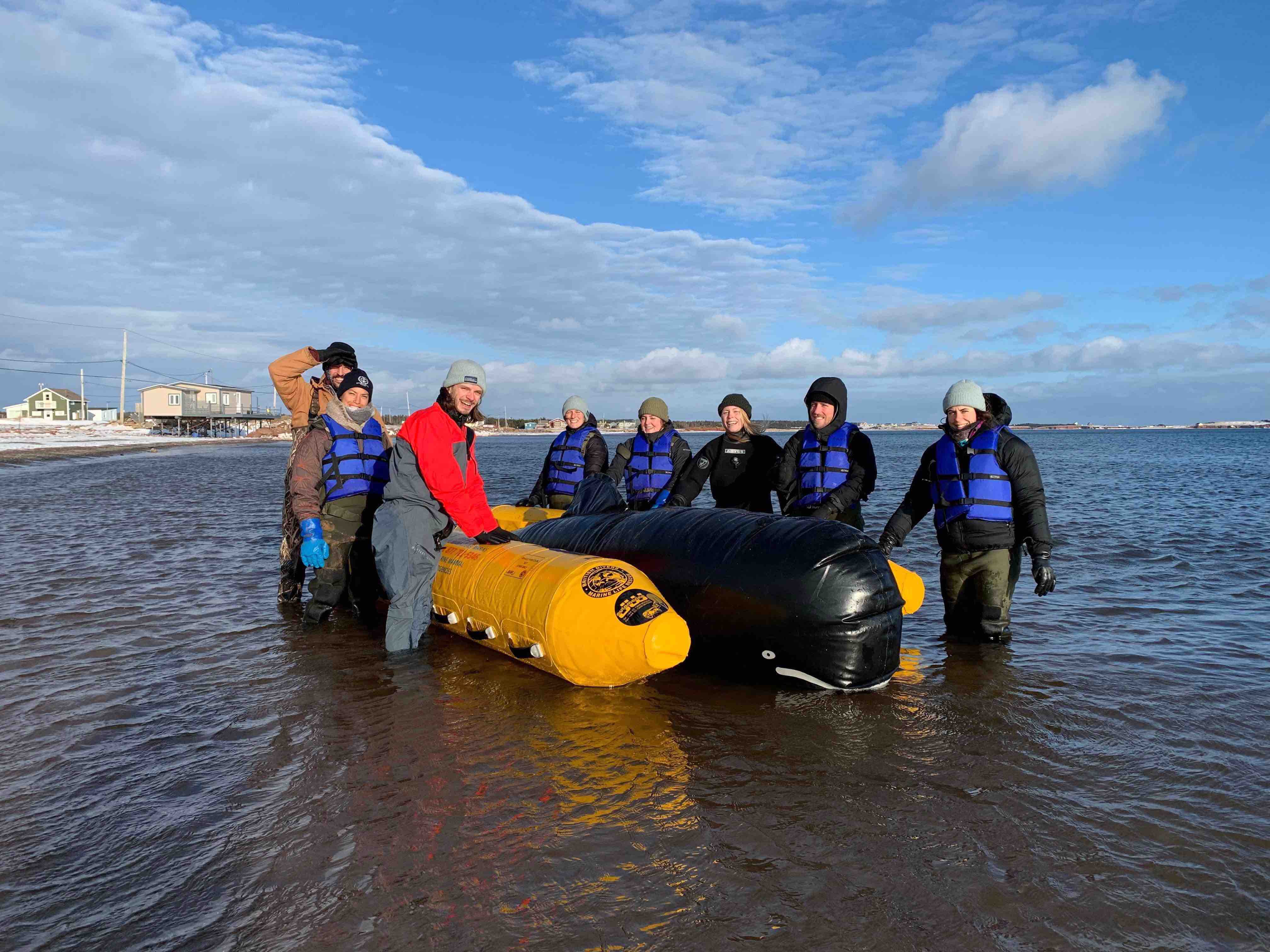This morning, a resident of the Bas-Saint-Laurent region reported the carcass of a toothed whale with a dark back and a pale belly, a prominent dorsal fin and a rounded but not bulging forehead. Based on what he knew, he was looking at some kind of dolphin, a killer whale to be exact. As killer whales are uncommon in the St. Lawrence Estuary, the call centre team was anticipating instead a harbour porpoise, which was a better match given the small size (1.20 m) of the animal. In the end, photos taken by a volunteer revealed that it was actually a young white-sided dolphin.
The 1-877-7baleine call centre team frequently says that their work often resembles that of a detective! When a mammal is seen beached or adrift, it is not always easy for a novice to determine what species it is. It sometimes becomes difficult to determine whether the animal is alive or dead. When the phones of the Marine Mammal Emergencies hotline ring, attendants are prepared to scroll through a list of questions with the witness in order to get the most accurate picture possible of the situation.

The Quebec Marine Mammal Emergency Response Network is 12 years old and there are myriad stories about erroneous identifications of species, or even places. Park wardens were once dispatched to the Saint-Siméon wharf in Charlevoix to assess a large dead rorqual, while the stranded carcass was actually on the shores of Saint-Siméon…in the Gaspé Peninsula. A specialist in beluga sampling once travelled on an autumn day prepared to study a young specimen of this species, only to finally find himself face to face with a sturgeon. A Marine Mammals Emergencies volunteer also travelled along the shores of the river in the Québec City region, expecting to analyze a seal carcass, only to discover that it was a beaver! In another instance, a white carcass believed to be a beluga beached on the tidal flats of the Bas-Saint-Laurent region proved to be that of a deer. Lastly, this past May, a team of researchers went to validate what appeared to be a beluga carcass: a bright white mass reported from a distance amongst the rocks in the Longue-Rive sector of the North Shore region. When they arrived, they found that it was actually the remains of an inflatable pool!
Interventions by species and case

Depending on the species and case type, a variety of interventions might be undertaken by Network partners: towing, sampling, flensing, necropsy, disentanglement, situation follow-up, etc. This is why a host of questions must be asked to the witnesses in the first few minutes of the phone call. Questions can sometimes seem simplistic: presence of scales, fur or smooth skin to distinguish a fish from a seal or a cetacean. Orientation of the tail to distinguish a whale from a fish. Presence of teeth or baleen to identify the group of cetaceans to which it belongs. Do they see the back of a motionless beluga or is it lying on its side, in order to distinguish an animal that is logging (article in French) or resting from one that is dead or struggling? Are there any scavengers nearby to suggest whether it is a carcass or an inert object? What is the animal’s colour pattern and approximate size? Is it injured? Does it bear any obvious signs of entanglement? All these questions are essential to gain an accurate picture of the situation and correspondingly develop an appropriate intervention plan.
The state of decomposition of some carcasses may also complicate identification. Questions about certain characteristics may help reach a conclusion, but very often a photo is worth a thousand words. The era of smart phones has greatly facilitated the work of the call centre. And, when doubt remains, we can turn to over one hundred volunteers throughout Quebec who travel to validate situations and provide answers to outstanding questions.





